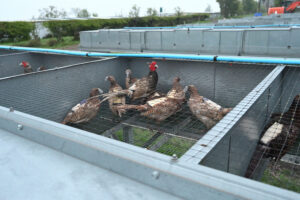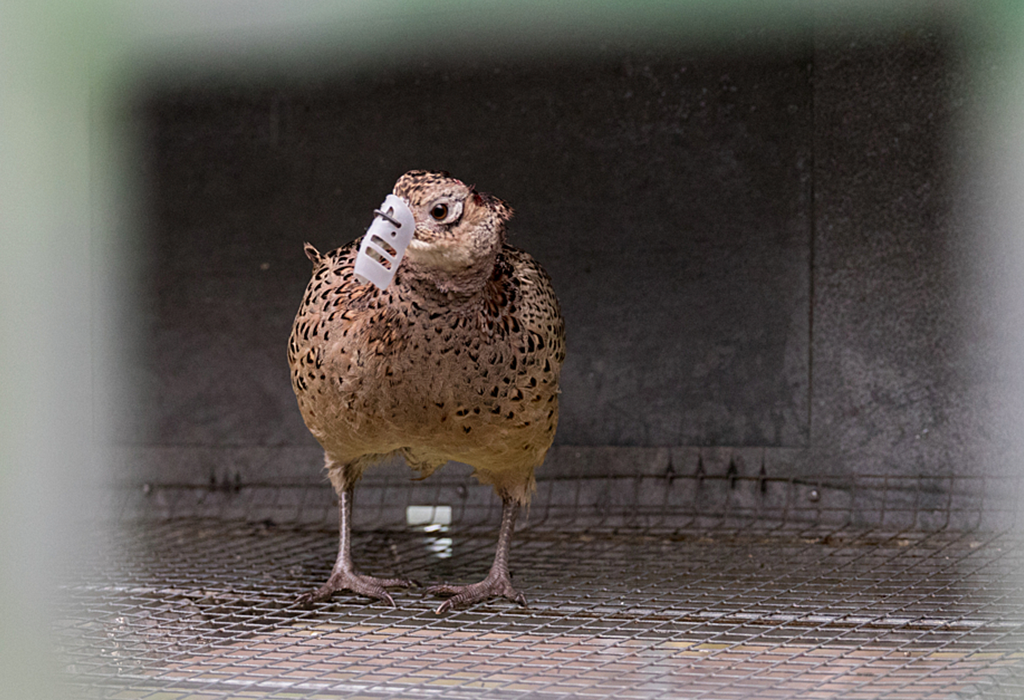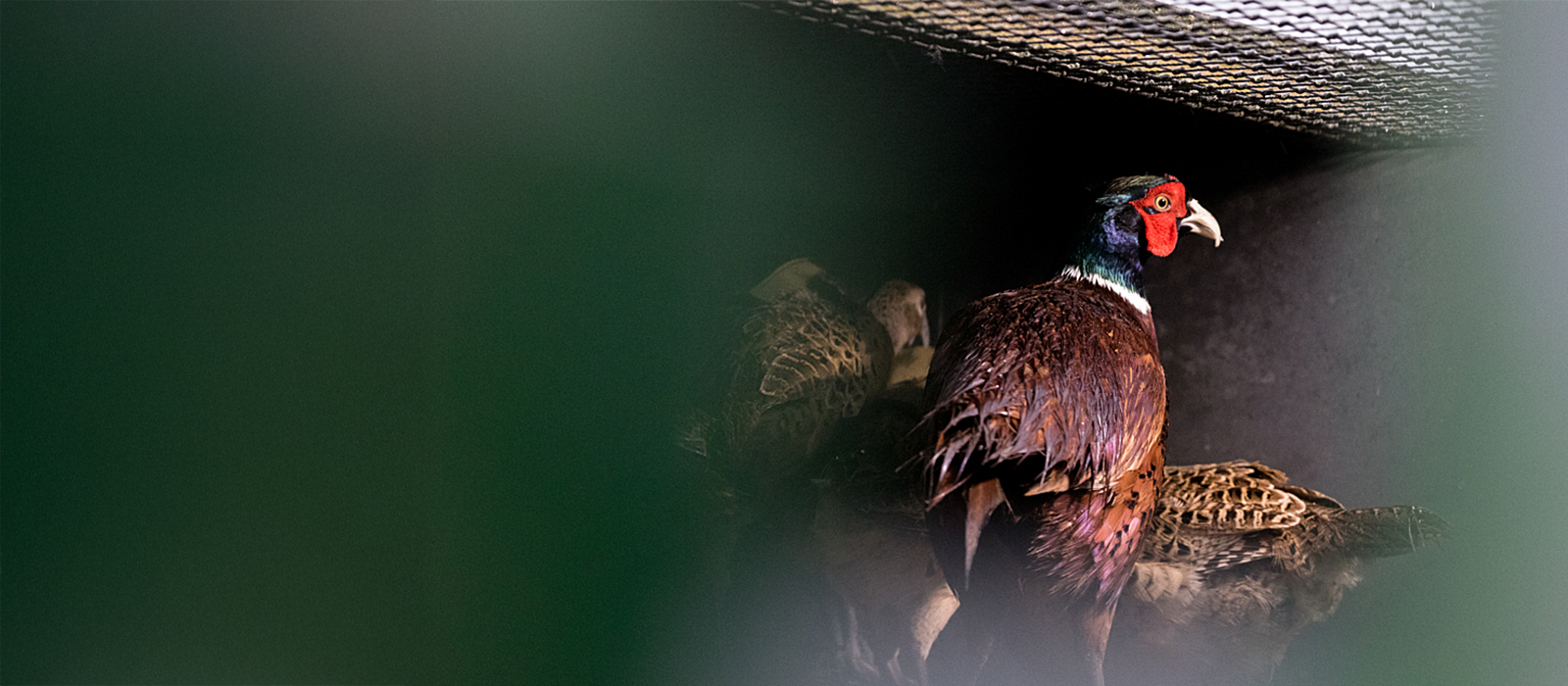In the wild, female pheasants live in small groups with one male to protect them. They are highly adaptable, sometimes roosting in trees, making a nest or scraping in vegetation during the breeding season.
Partridges choose a mate and form a monogamous bond, staying with their chosen partner for life. Once bonded, the male chooses a nesting site usually near a field’s edge and with a good all-round view.
The shooting industry, however, purposely breeds 40-60 million pheasants and partridges every year to be released into the British countryside every year – all for the fleeting pleasure of a few ‘wealthy guns’.
These beautiful birds do not deserve to be incarcerated, to be treated like objects and shot from the skies by those who wish to watch them die.

Most pheasants and partridges are not born in the wild; they are purpose-bred on farms. Their parents may have been among the tens of thousands imprisoned in metal cages on huge industrialised farms for months – or sometimes years – in the blazing heat and freezing cold, with no escape.
They are so stressed they often wound one another and harm themselves in their desperation to escape the cages; head injuries are common as they try to fly upwards towards the sky that’s in sight, but not in reach. In response, gamekeepers fit restraints over their beaks to limit the damage to their ‘stock’ – but this does nothing to alleviate the birds’ stress or their desire to be free.
The parent birds have their eggs stolen from them, which are incubated and hatched before being boxed up and sent off to shoot operators. Once there, the chicks are reared, often in huge industrial sheds. Their destiny is to become feathered targets for shooters.
Animal Aid conducted an investigation into the use of huge machines called macerators at game farms, which grind up discarded eggs and even live chicks that are considered ‘substandard’. We have also repeatedly investigated the factory farms on which the parent birds are caged and we continue to campaign for an immediate ban on the raised laying units, used to keep the parent birds captive.
In 2025, Animal Aid patron Chris Packham launched our Killing our Countryside campaign, which calls for a total ban on the production and ‘sport’ shooting of live birds for entertainment. The detailed Killing our Countryside report examines the horrific cruelty of shooting and its devastating impact on our environment.
The scale of the problem is vast: every year, around 40-60 million non-native pheasants and partridges are released into the British countryside. They trample native plants and compete with other animals for food. In fact, in late summer, the weight of all the birds released is greater than that of all the wild birds in Britain. This mass release has a devastating impact on wildlife and ecosystems.
In addition, wildlife is poisoned by the 7,000-plus tonnes of lead ammunition discharged into the UK countryside by shooters each year. There is also the danger of bird flu spreading from game farms to wild birds once the farmed birds are released.
And finally, there is the issue of gamekeepers illegally killing other animals considered ‘threats’ such as protected birds of prey. The majority of recorded crimes against birds take place on shooting land.
Unlike pheasants and partridges, grouse are not produced on farms. Instead, shoots and gamekeepers manipulate upland areas to make them suitable for grouse to reproduce.
The unnatural, heather-rich environment is created because the grouse thrive on young heather shoots. To create fresh young shoots, the heather is burned, which can harm wildlife and damage the environment.
Burning the peat-rich moors to produce dry ground suitable for growing heather releases carbon dioxide and reduces the moorland’s ability to absorb and retain water. People who live in towns and villages below the uplands argue that such burning leads to periodic devastating flooding.
Grouse moors have also been identified as hotspots for raptor persecution. Many red kites, golden eagles and hen harriers ‘go missing’ from areas managed for grouse shooting. The RSPB reports that the majority of hen harrier disappearances occur near to grouse moors.
The so-called Glorious Twelfth, the grouse shooting season, starts on 12 August, when wealthy shooters take to the moors to kill these poor birds for ‘sport’ and prestige.
The breeding, importing, releasing and shooting of birds for ‘sport’ has no place in a kind and progressive society. The shooting industry is one that only a few enjoy yet it does huge damage to the environment. It also risks human health, persecutes wildlife with traps and poisons, and of course harms the birds themselves. In fact, there may be no animal rights violation quite like breeding birds simply to shoot them out of the sky for ‘fun’.

Take action against the shooting industry
The shooting industry is cruel and indefensible. Take action today for a kinder tomorrow.

